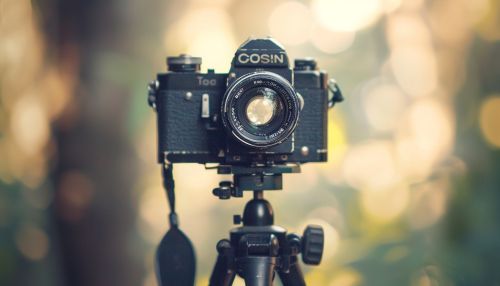Cinematography
Introduction
Cinematography, derived from the Greek words "kinema" meaning movement and "graphein" meaning to record, is the art and technique of motion-picture photography. It involves the manipulation of light and shadow, and the use of camera tricks to create aesthetic images that support and enhance a story. A professional who practices cinematography is called a cinematographer.
History
The history of cinematography can be traced back to the origins of motion picture technology in the late 19th century. The first moving images were created by inventors who were trying to capture reality and present it to an audience in a new and exciting way. The first motion picture camera, the kinetoscope, was invented by Thomas Edison and his team in 1891.
Technical Aspects
Cinematography involves a range of technical aspects, including camera movement, lens choices, lighting, and film stock—or in the case of digital cameras, sensor size, resolution, and dynamic range.


Camera Movement
Camera movement is a fundamental aspect of cinematography. The movement of the camera influences the narrative by guiding the audience's attention and enhancing the emotional impact of a scene.
Lens Choices
The choice of lens has a profound impact on the image, affecting depth of field, distortion, and field of view. Cinematographers choose lenses based on their creative goals for the scene.
Lighting
Lighting is a crucial component of cinematography. It shapes the mood of a scene, directs the viewer's attention, and can even suggest a time of day or a specific location.
Film Stock and Digital Sensors
The choice between film stock and digital sensors can greatly affect the look of a movie. Film stock has a unique aesthetic quality that some filmmakers prefer, while digital sensors offer more flexibility in post-production.
Aesthetic Aspects
Beyond the technical aspects, cinematography also involves aesthetic decisions related to composition, color, and visual style. These choices contribute to the overall visual storytelling of the film.
Composition
Composition refers to the arrangement of elements within the frame. Cinematographers use principles of visual art, such as the rule of thirds and leading lines, to create balanced and engaging images.
Color
Color can be used in cinematography to evoke emotions, highlight important elements, or signify changes in the narrative. The choice of color palette can greatly affect the mood and tone of a film.
Visual Style
The visual style of a film is largely determined by the cinematographer. This can include decisions about camera movement, lens choice, lighting, and color palette.
Role of the Cinematographer
The cinematographer, also known as the director of photography, is responsible for making artistic and technical decisions related to the image. They work closely with the director to translate the script into visual images.
Impact on Film
Cinematography plays a crucial role in the way a film is perceived by the audience. It can create mood, define character, and tell a story. The cinematography of a film is often a key factor in its success or failure.
Future Trends
As technology continues to evolve, so does the art of cinematography. The advent of digital cinematography has opened up new possibilities for visual storytelling, while also presenting new challenges.
